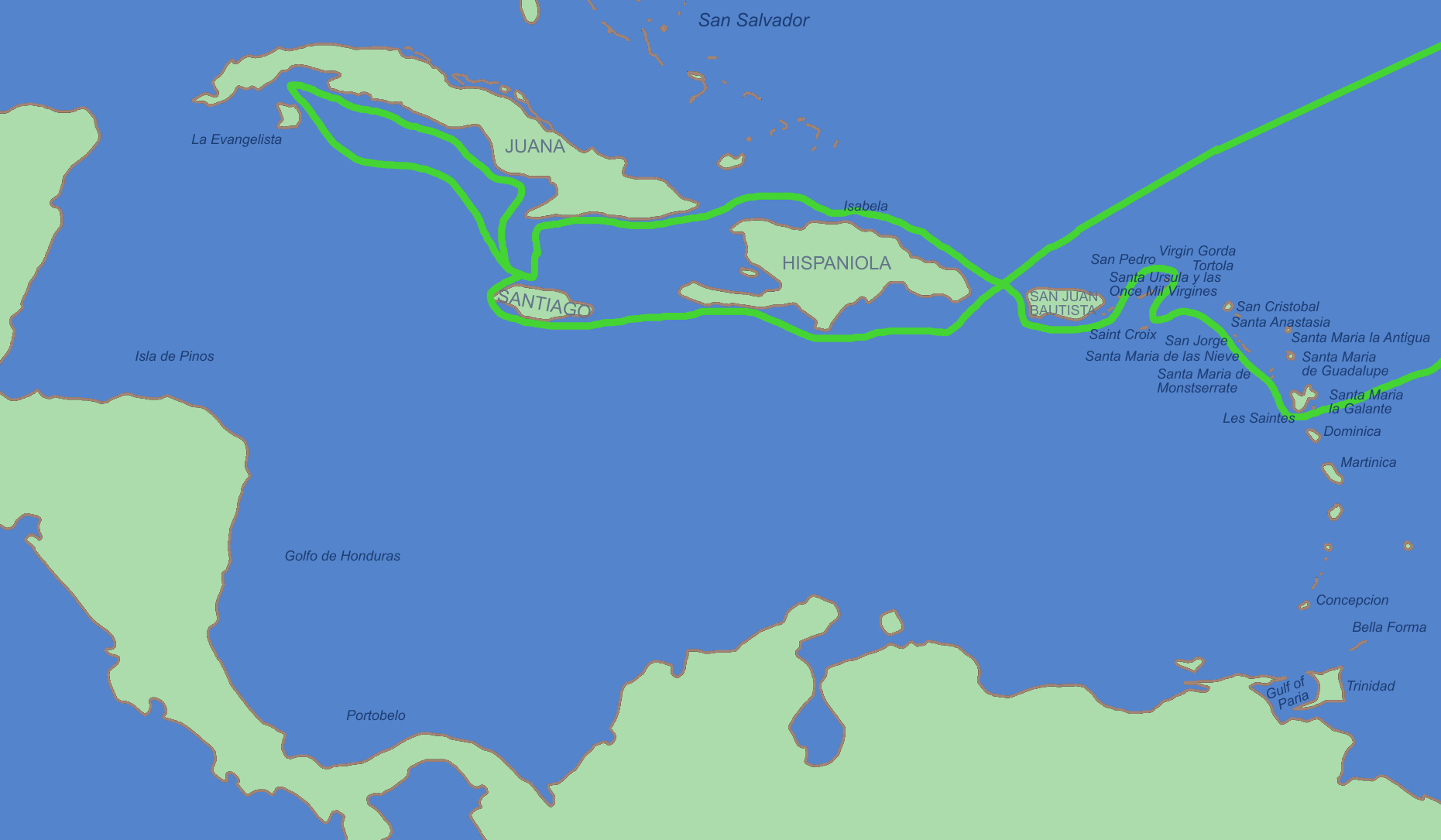 |
| Map of the Second Voyage |
The group continued on to Hispaniola on November 22. His goal was to revisit the settlement of La Navidad that was set up on his first voyage. However, he found the settlement in ruins, and 11 of the 39 Spaniards in the settlement dead. He found out the native Taino people committed the attack, so he set up a system where any member of the Taino that was over 14 years old had to deliver an amount of gold every three months, and if they couldn't get gold, then they had to bring an amount of spun cotton. Punishment for not bringing the demanded amounts was a cutting off of the hands and bleeding to death. Columbus moved on and began the settlement of La Isabella, but this settlement didn't last long because it was situated in a poor location.
Next he moved on to Cuba, which he arrived at on April 30, 1494. He explored the island's southern coast, then moved on to Jamaica on May 5. He retraced his way back to Hispaniola, and departed the island for Europe on August 20, 1494.
This voyage was wrought with controversy throughout history. Not only was his harsh treatment of the Taino people called into question, but an incident with a friend of his that accompanied the voyage. Michele de Cuneo, a childhood friend of Columbus, wrote a letter about a native woman that he wished to have for himself, but when the woman wasn't interested, Cuneo beat her. Some historians have come to the conclusion that Columbus not only knew about the event but willfully accepted it. Either way, Columbus's ways and manners with the natives were beginning to be called into question, but they wouldn't reach the courts in Spain until after his third voyage.
No comments:
Post a Comment